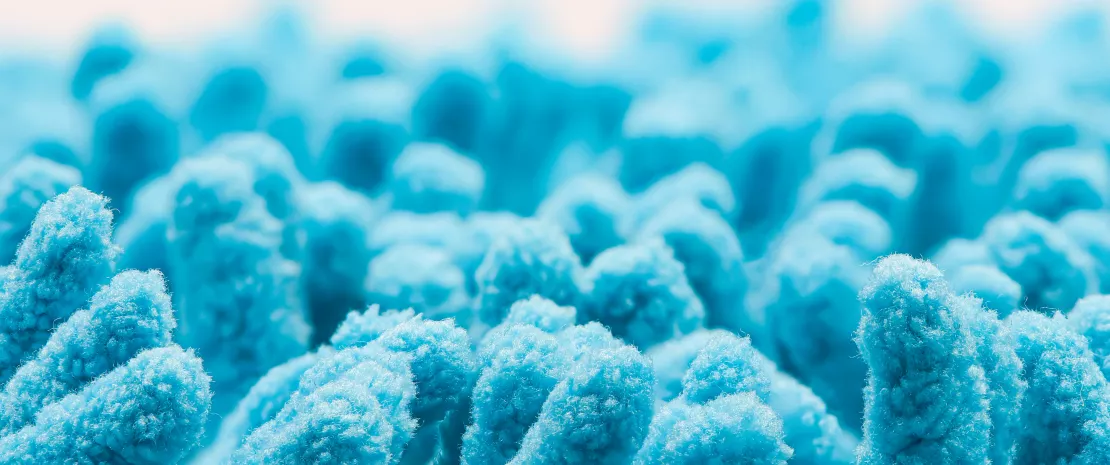How a 7-strain consortium rebuilds the gut to defeat antibiotics resistant bacteria
How do you evict VRE post-antibiotics? Not by direct assault, but by rebuilding the ecosystem. A rationally designed 7-strain consortium restores the gut's barrier, thanks to one keystone synergist that unlocks the entire team's potential.
Sources
This article is based on scientific information

About this article
Every clinician knows the trade-off. A course of broad-spectrum antibiotics can be life-saving, but it often leaves the gut microbiome a cleared landscape. This state of (sidenote: Dysbiosis An imbalance in the microbial community, characterized by reduced beneficial bacteria and increased harmful species, potentially leading to adverse health outcomes. ) opens the door for colonization by antibiotic-resistant bacteria, chief among them vancomycin-resistant enterococci (VRE). A new study from INRAe details a precise strategy to rebuild the gut's defenses, not with a sledgehammer, but with a scalpel.
A precision toolkit for microbiota restoration
Rather than relying on the undefined mix of a fecal transplant, researchers used mathematical modeling to rationally design a consortium of seven specific (sidenote: Commensal bacteria Bacteria that cohabit peacefully with their host, particularly in the gut. They can benefit the host by boosting the immune system, aiding digestion, or fighting pathogens. ) . This (sidenote: Live Biotherapeutic Product (LBP) Biological product containing living microorganisms, such as bacteria, and intended to prevent or treat disorders and diseases (vaccines do not fall into this category). Rouanet A, Bolca S, Bru A, et al. Live Biotherapeutic Products, A Road Map for Safety Assessment. Front Med (Lausanne). 2020;7:237. ) , named Mix7, includes strains from the Lachnospiraceae, Ruminococcaceae, Lactobacillaceae, and Muribaculaceae families. When given to mice challenged with Enterococcus, Mix7 didn't just compete for space; it actively accelerated microbiota restoration. The data shows a rapid recovery of the Bacteroidota phylum, a key group often depleted by antibiotics, which correlates with reduced VRE levels.
Interestingly, the researchers found that the effect of Mix7 was not simply a sum of its parts. When they removed one specific member, (sidenote: Muribaculum intestinale A species of anaerobic bacteria belonging to the Muribaculaceae family, a common and abundant member of the healthy mouse gut microbiota. This specific strain was identified in the study as a keystone synergist, essential for the protective effect of the Mix7 consortium ) , from the consortium, the entire therapeutic effect vanished. Yet, when administered alone, this bacterium was inert against VRE. In-vitro tests confirmed that none of the Mix7 strains, alone or combined, directly inhibit VRE growth. This points to a cooperative mechanism: M. intestinale is not a direct killer but a keystone synergist, required to enable the other six strains to effectively rebuild the (sidenote: Ecological Barrier The protective effect exerted by a healthy and diverse gut microbiota that prevents colonization by invading pathogens. This defense is achieved through mechanisms like competition for nutrients and the production of antimicrobial compounds. ) . This is not direct warfare; it's ecological engineering.
Functional recovery
This ecological restoration had profound functional consequences. The study found that Mix7 was effective even in a more persistent state of dysbiosis, though not in all subjects, with a 30% to 70% response rate across trials. In "responder" mice, VRE clearance was associated with a complete functional reboot of the gut, marked by higher cecal concentrations of short-chain fatty acids like acetate, propionate, and butyrate, alongside a normalization of bile acid and amino acid profiles.
This variability suggests a powerful clinical application: the initial composition of a patient’s microbiota could serve as a predictive biomarker, allowing for the stratification of patients most likely to benefit from this intervention.
The path to the clinic
The path from bench to bedside appears promising. Critically for translation, five of the seven bacterial species in Mix7 are shared between mice and humans, with the other two possessing direct human functional equivalents. This work provides a clear blueprint for developing targeted biotherapeutics that not only clear a specific pathogen but also restore the host's endogenous defenses. Such strategies represent a vital new front in the fight against antibiotic-resistant bacteria, a key goal highlighted each year during World Antimicrobial Awareness Week (WAAW).
Everything you need to know about antibiotics and antimicrobial resistance
Each year, since 2015, the WHO organizes the World AMR Awareness Week (WAAW), which aims to increase awareness of global antimicrobial resistance. Held on 18-24 November, this campaign encourages the general public, healthcare professionals and decision-makers to use antimicrobials carefully, to prevent the further emergence of antimicrobial resistance.












